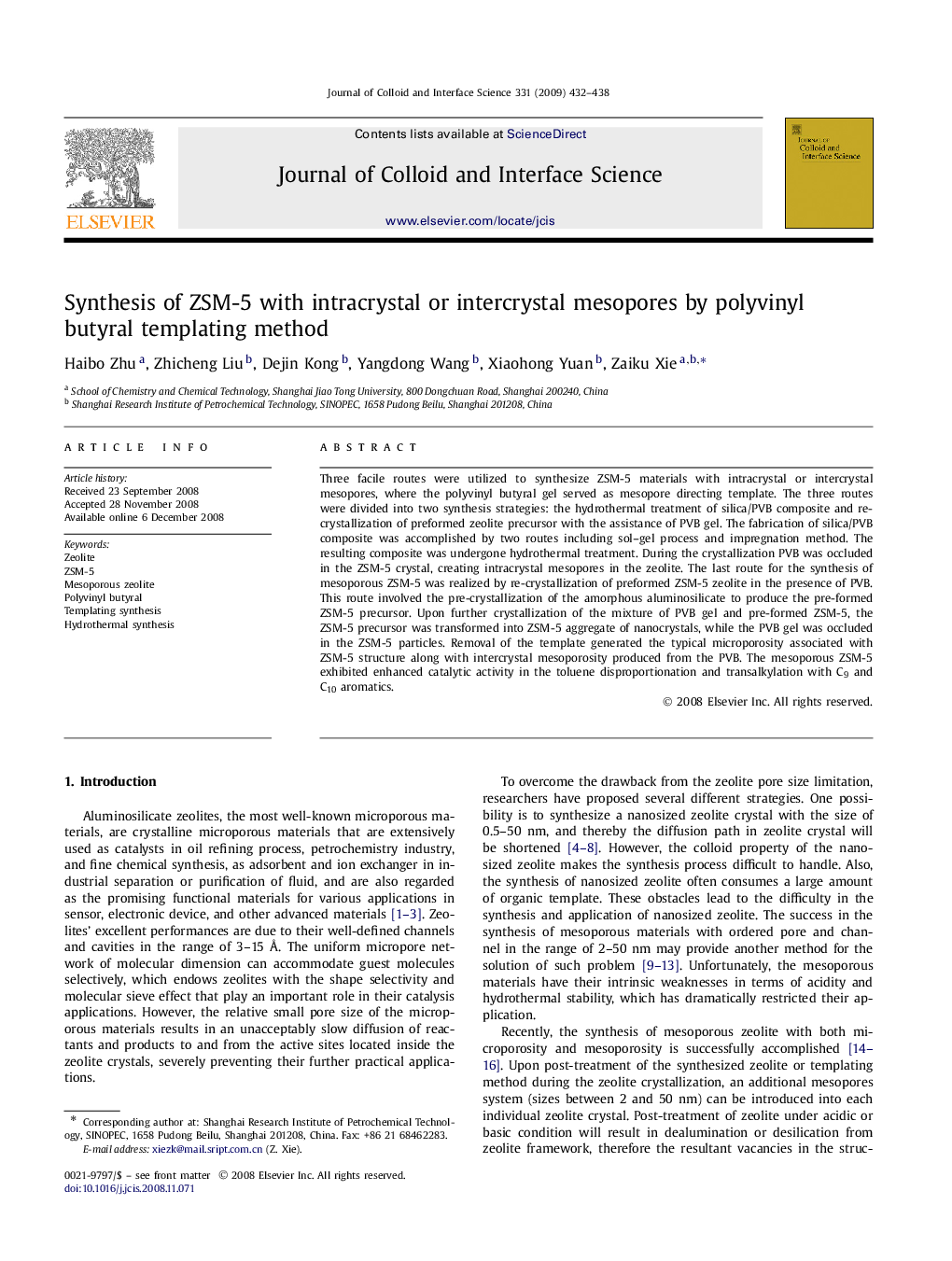| Article ID | Journal | Published Year | Pages | File Type |
|---|---|---|---|---|
| 610841 | Journal of Colloid and Interface Science | 2009 | 7 Pages |
Three facile routes were utilized to synthesize ZSM-5 materials with intracrystal or intercrystal mesopores, where the polyvinyl butyral gel served as mesopore directing template. The three routes were divided into two synthesis strategies: the hydrothermal treatment of silica/PVB composite and re-crystallization of preformed zeolite precursor with the assistance of PVB gel. The fabrication of silica/PVB composite was accomplished by two routes including sol–gel process and impregnation method. The resulting composite was undergone hydrothermal treatment. During the crystallization PVB was occluded in the ZSM-5 crystal, creating intracrystal mesopores in the zeolite. The last route for the synthesis of mesoporous ZSM-5 was realized by re-crystallization of preformed ZSM-5 zeolite in the presence of PVB. This route involved the pre-crystallization of the amorphous aluminosilicate to produce the pre-formed ZSM-5 precursor. Upon further crystallization of the mixture of PVB gel and pre-formed ZSM-5, the ZSM-5 precursor was transformed into ZSM-5 aggregate of nanocrystals, while the PVB gel was occluded in the ZSM-5 particles. Removal of the template generated the typical microporosity associated with ZSM-5 structure along with intercrystal mesoporosity produced from the PVB. The mesoporous ZSM-5 exhibited enhanced catalytic activity in the toluene disproportionation and transalkylation with C9 and C10 aromatics.
Graphical abstractThe ZSM-5 zeolites with intracrystal or intercrystal mesopores were synthesized by using the polyvinyl butyral gel as the mesopore directing template, and the mesoporous ZSM-5 exhibited improved catalytic activity.Figure optionsDownload full-size imageDownload as PowerPoint slide
